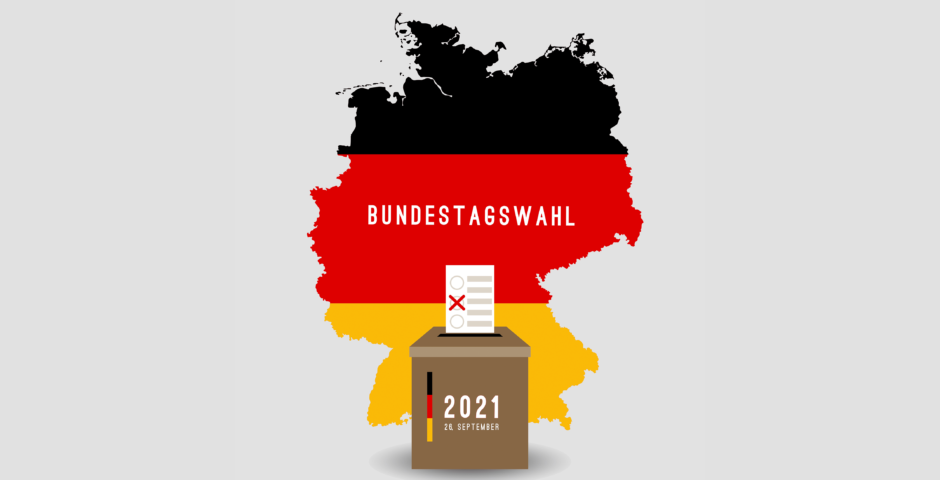Ostalgia: Window to the past or reflection of the present?

What nostalgia in Central Europe can teach us about East-West relations in the 21st century.
In June 2015 supermarket chain Lidl launched a special campaign in the Czech Republic that surpassed everyone’s expectations. During this period, aptly named Retro týden (Retro week), Lidl brought back around 40 items from the 1970’s. In other words: items from the Czechoslovak Socialist Republic. This promotion ranged from repackaging products in their old containers to temporarily re-introducing products that had been gone for decades: milk sold in bags, rumové pralinky (rum-filled pralines), Májka paste, Jelen soap; the list goes on. The items sold out in no time and people lined up outside of Lidl stores across the country to get their hands on them. Since this first successful Retro týden Lidl has brought back the promotion on an annual basis and has heavily expanded its Retro assortment to almost 80 items last year. The Reason for this massive interest in old socialist products? The answer, according to many, is ostalgia.
A rejected past
It does not stop with hairspray and cream cheese, products from the communist era are hot – the list of popular items is endless. Brands are reintroducing old designs due to popular demand and some companies that did not survive the transition are even brought back. Popular Czech soda brand Kofola (the answer to Coca Cola back in the days) rebranded itself to its 1970’s design, showing how nostalgia mixed with marketing can lead to a complete revival of brands who were not expected to survive the competition with their Western counterparts. After the fall of communism, sales were down by 86% compared to a peak of 180 million litres in 1970, but now the company has again managed to cement itself as the country’s favourite summer drink.
Everyone feels nostalgic from time to time. Sometimes nostalgia hits when you drive past your old elementary school or when you find an old toy in your attic that you have not seen in years. We all long back to our past from time to time. But in this case, nostalgia is part of a bigger phenomenon. Growing up in the West, children learn about the communist era as a negative period in history and a bump in the road to democracy. Apart from these short history lessons not much else is taught about the socialist past of many European countries which heavily shapes Western-European people’s perception of the era: Western Europe was the good and civilised part of Europe that helped its Eastern counterparts for the better after the end of communism.
But what about the people that grew up during this ‘rejected’ time? When asking people who lived under socialism about their past the first things that come to mind are not negative at all: guaranteed jobs, free healthcare, free education, secured food supplies and secured housing. This view is definitely not in line with the Western narrative that frames Western society as ‘the perfect utopia’ that fixed ‘the East’ after the fall of communism. Feeling reminiscent of the communist past is therefore viewed with a lot of disdain from Westerners. How on earth can you have positive feelings towards a regime that suppressed you, their thinking goes. It is against this background that ostalgia developed. So let us define what ostalgia is exactly, before diving deeper into the societal issue it represents.
Nostalgia or ostalgia?
The neologism “ostalgia” is a combination of the German word for East “Ost-” and nostalgia. The term was allegedly first coined by German comedian Uwe Steimle, who even had it patented. Nowadays it is a popular concept used in academia and everyday speech. The exact meaning of ostalgia is not easy to pinpoint, especially since people have given it their own definitions. The word ostalgia therefore has different interpretations. Some researchers claim that ostalgia is just a way of remembering the past, which is inevitable. In that sense nostalgia and ostalgia are the same concept. Even if there were bad experiences in the communist sphere, there are also good memories connected to the socialist experience and since nostalgia makes people overall more positive of their past, it only makes sense that people also become more positive of a socialist past.
But ostalgia is more than merely the ‘eastern’ version of nostalgia. There is a set of factors that sets ostalgia apart from ‘normal’ feelings of nostalgia that people experience throughout their lifetime. The first reason why ostalgia is a more loaded term than good-old regular nostalgia has historical roots. The disappearance of the Soviet Union and communist influence in its satellite states did not lead to a reunification of two parts of Europe that had been separated for decades; it was more an one-way process of westernisation. Nowhere is this as evident as during the German reunification.
Ostalgia as coping mechanism
East- (GDR) and West-Germany (FRG) had been separated for over 35 years. All the two shared at this point were a language and a common pre-war history. The GDR had its own particular culture, industry, entertainment and products that one could buy. According to Thomas Brussig, a German writer best known for his satirical novels about the GDR, East-Germany basically disappeared overnight which has led to a very conscious break with the past. And this divide can be identified in all countries that used to be under the communist sphere of influence. People can clearly pinpoint the ‘before’ and ‘after’ moment when their lives changed significantly and irreversibly.
The socialist era has been underlined and is considered a closed chapter. People have seen their past be historialised. Imagine walking into a museum and recognising items that you yourself used to own. Such a clear contrast between the past and the present is quite confronting. Therefore some scholars see ostalgia as a way of crossing a bridge between then and now, a coping-mechanism you could even call it. Displaying ostalgia is, same as nostalgia, a way of going back to a past that you fear might be gone. But when it comes to the socialist past, this is in fact the case. In that sense, indulging yourself with products from the communist era is not so much celebrating the period, but testing whether you still have a link to a period of your life that society frames as being gone.
Ostalgia as symbolic resistance
Another aspect that sets ostalgia apart from nostalgia is the way it can function as an instrument of symbolic resistance against present times. After the fall of communism and the transition to a capitalist open market economy loads of things changed, and not always for the better. Ostalgia can therefore also materialise as a certain disappointment with the present. Life after the dissolution of the communist states did not improve for everyone; people lost their jobs after they had become obsolete in the new society, worries about pensions arose, and single parents struggled to stay above the poverty line. Especially unemployment was rough since this concept was nonexistent in the socialist era. Ostalgia could therefore also be a reminder for people of genuine happier times when certain troubles like not being able to find housing did not occur.
On top of that, a majority of people who lived during the socialist era do not appreciate how it is mostly talked about in a negative context. Many products from the socialist era are seen as less qualitative knock-offs from Western products and the countries themselves are even to this day interpreted as inferior in Western Europe. My Czech mom learnt this the hard way after moving to the Netherlands when a new acquaintance asked if she wanted some coffee only to be asked in addition to that if she knew what coffee is. She replied that the Czech Republic indeed also has coffee, but she couldn’t help but wonder: do these people think I grew up in a tree? The comeback of so many communist consumer products can therefore also be seen as a middle finger to the many Western products from multinationals that flooded the market from the 1990’s onwards and changed Central Europe culture and consumerism in a fundamental way. By choosing the good old socialist products of the past over these new foreign products people can express a form of patriotism and show that they are and never were inferior to Western Europe.
Economic disparities and GDR revival
Germany in particular has seen the expression of this discontent in the form of ostalgia. When talking about the German unification, it is easily declared as a great and successful occurrence in German history. It is described as something that East and West had been waiting to do for years, leading to an immense euphoria when it finally took place. But if one dives deeper into the topic, problems can be identified, which have been existent up until even now. The monopolisation of the public and political sphere by the Western part and the feeling of inferiority on the side of the eastern Germans has created conflict.
Going deeper into the disparities caused by the unification of the two German republics, the high social and economic costs of transitioning fell mostly on the shoulders of East Germans. The formation of a common economic system caused the sudden crisis of the Eastern system, due to reorganisation and devaluation. Also the GDR products were not competitive on the Western market. The fact that the Western companies immediately conquered the Eastern market largely eliminated local products. Consequently, the main problem that arose in the former GDR was unemployment. This issue made the remaining Eastern population suffer the most. So, the emergence of ostalgia could be explained as a form of resentment of life in this precarious new reality. So, next to this feeling a form of ‘symbolic resistance’ emerged, which manifested in the form of the revival of GDR products, shops and lifestyle. This includes things like discos, music, coffee shops and especially a new GDR branded film industry.
Ostalgia as a social language
Adding to this symbolic resistance, ostalgia can be viewed through an anthropological lense which has been studied in the context of the Polish People’s Republic (PRL) by Dr. Marcin Brocki. He offers two theories for the phenomenon of ostalgia in Poland, as a sign of a drastic shift in the institutions of everyday life that has to be interpreted by an older ‘social language’. The larger the difference between the understood language and the new way of life, the bigger the opacity and confusion. This leads to a feeling of reluctance to the new and a feeling of fondness for the old and known. Another theory proposed is that ostalgia should be read as a form of interpretation of the present day.
The feeling of nostalgia in anthropology is treated as a form of interpretation of changes in communication. One of the largest social changes that could occur is the reduction of social connections which is precisely what happened in Poland. In the People’s Republic due to the scarcity of many goods and services people formed large webs of personal connections throughout society in order to meet their needs. Local currency could not get you much without knowing where to spend it. These large webs of connections became a ritualized form of everyday interaction; something that after the fall of communism became largely redundant.
So if nostalgia is the measure of difference in forms of communications, the utter gulf of living in a scarcity filled community clashes with the atomized society we live in today. In PRL you had to rely on your large network to get anything done, now you do not need to know the cashier in order to buy sausage or be a friend of the local government official in order to process your documents faster. The individual just pays for it, and it is theirs without any favours or promises. Although the political/economic system of PRL bred corruption and under the table dealings, this form of personalized community is something that people feel a longing for. So ostalgia in Poland is not only an outcome of a longing for youth or typical Polish complaining, as is commonly believed. It can be understood as coming from the rapid shift to new societal structures that many people are having trouble understanding which causes nostalgia for the old, understandable societal language.
Ostalgia in 2021
Ostalgic products can be a trip down memory lane or a fun new experience, depending on where you grew up. They can take you a step closer to socialist history and lead to new experiences or make you remember old ones. Ostalgia is, however, more than just sentiment. It is also a way of showing that Central and Eastern European culture is much more than it is often made out to be, especially by people that grew up in the West. On top of that, ostalgia is also an interesting marker of what people wish for themselves at present. It is alarming in our affluent society that many long for basic necessities such as jobs and housing. Therefore, ostalgia should not be dismissed as sentimental nonsense. Instead, we should aim at opening up the dialogue on why ostalgia has managed to become the phenomenon it is in the first place. Doing that allows us to realise that it has less to do with the past and more with the present than one might expect at first glance.
Linda den Bol has obtained a Bachelor’s degree in History from Radboud University and is currently pursuing her dual Master’s degree in European Governance at both Masaryk University and Utrecht University. She is also a research intern at The Netherlands Scientific Council for Government Policy (WRR).
Sandra Zwick has previously obtained a degree in Economic Sciences and Japanese Studies from Martin-Luther-University Halle/Wittenberg. Currently she is pursuing her dual Master’s degree in European Governance at both Masaryk University and Utrecht University.
Kamil Jarończyk has obtained a Bachelor’s degree in International Relations and Area Studies (specializing in Europe and CIS countries) from the Jagiellonian University in Kraków and is currently pursuing his dual Master’s degree in European Governance at both Masaryk University and Utrecht University. He is also a Junior Research Fellow at Visegrad Insight.
Image: Shutterstock.




